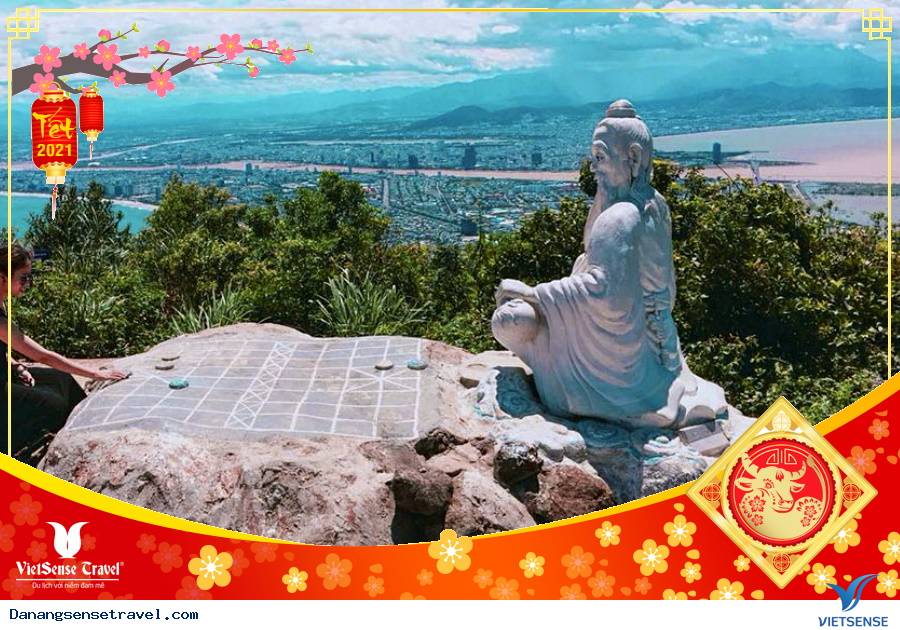Da Nang’s recent merger with surrounding areas presents both immense opportunities and significant challenges for its tourism sector. While the combined entity boasts a diverse range of offerings, experts warn of potential pitfalls if a cohesive branding and marketing strategy isn’t implemented.
The newly expanded Da Nang city, encompassing previously separate administrative regions, now faces the crucial task of integrating its diverse tourism offerings into a unified and compelling brand. This presents a complex scenario, highlighted by contrasting market structures and brand identities between Da Nang and its former neighboring areas, particularly Quảng Nam province.
Diverging Tourism Landscapes: Da Nang vs. Quảng Nam

Da Nang and Quảng Nam, while geographically proximate and historically interconnected, cater to significantly different tourism markets. According to Outbox Consulting, a market research firm specializing in tourism data analysis, a key difference lies in their respective international visitor demographics. While Da Nang’s international tourism market largely mirrors the overall structure of Vietnam’s inbound tourism, Quảng Nam exhibits a distinct profile.
“Da Nang and Quảng Nam have significant differences in their visitor market structures,” stated Đặng Mạnh Phước, Managing Director of Outbox Consulting, during a recent tourism development conference in Da Nang. He emphasized that Da Nang shows a considerable reliance on regional Asian markets, whereas Quảng Nam boasts a more balanced international client base, avoiding overdependence on any single region.
This disparity is particularly evident in the dominance of English-speaking tourists in Quảng Nam’s international visitor population, accounting for nearly 50%. This highlights Quảng Nam’s role in attracting high-quality international tourism to Vietnam, a crucial aspect of the nation’s tourism strategy.
The divergence extends beyond demographics. Da Nang’s tourism brand strongly emphasizes the coastal appeal, entertainment options, and MICE (Meetings, Incentives, Conferences, and Exhibitions) tourism. In contrast, Quảng Nam’s identity is deeply rooted in its rich cultural heritage, including the UNESCO World Heritage sites of Hội An ancient town and Mỹ Sơn sanctuary, community-based tourism, and eco-tourism.
This difference is visually apparent. Da Nang’s tourism imagery is often associated with the vibrant energy of the International Fireworks Festival, the Dragon Bridge, and the Golden Bridge. Quảng Nam, on the other hand, is depicted through the serene beauty and historical significance of Hội An and Mỹ Sơn.
Post-Merger Opportunities and Risks: A Balancing Act

The merger presents significant opportunities for Da Nang. By integrating the strengths of both regions, the city could establish a powerful tourism brand with diverse offerings and a wide appeal. The unified entity has the potential to offer a far more comprehensive and layered tourism experience, attracting a broader spectrum of visitors.
However, experts caution against the potential pitfalls of this integration. The contrasting market structures and brand identities pose a significant challenge. Without careful planning and a well-defined strategy, the merger could lead to a “two-headed” approach, pulling the brand in opposing directions.
“There are inherent risks following the merger, including potential conflicts in target markets, clashes between traditional and new market characteristics, and difficulties in measuring and managing overall tourist behavior,” warned Mr. Phước. He highlighted the risk of “destination averaging,” where the unique strengths of each region are diluted, leading to a less attractive overall proposition. Furthermore, inconsistencies in branding and messaging could create confusion and hinder effective marketing efforts.
Charting a Course for the Future: Strategic Recommendations

Addressing these challenges requires a strategic approach. PGS-TS. Phạm Trung Lương, former Vice President of the Vietnam Tourism Development Research Institute and Vice President of the Vietnam Tourism Training Association, emphasized the need for a complete restructuring of Da Nang’s tourism sector.
“Da Nang needs to restructure its tourism industry, focusing on developing unique tourism products based on innovative and creative thinking, aligning them with the appropriate markets and the new vision for development,” stated PGS-TS. Lương. He advocated for strengthening the existing brand through a deeper understanding of its core values and building upon its strengths.
Specifically, PGS-TS. Lương proposed establishing a clear vision for Da Nang’s future as a national tourism center with regional and international reach. This vision should prioritize the development of coastal tourism linked to the blue economy, setting strategic development goals for 2030 and a longer-term vision extending to 2050.
He recommends positioning Da Nang as a “heritage tourism destination,” further developing its identity as a “mega-city of heritage, events, innovation, and creativity,” attracting both regional and global tourists. This requires a unified brand strategy that acknowledges and incorporates the distinct strengths of both Da Nang and Quảng Nam, avoiding the pitfalls of a diluted or inconsistent brand identity.
Successfully navigating this transition requires a careful balancing act. The merger presents an unparalleled opportunity to create a world-class tourism destination, but realizing this potential requires a unified strategy that leverages the unique strengths of each region while mitigating the risks of conflicting brand identities and market segments. Failure to do so could lead to a loss of the distinct appeal that each region currently enjoys, resulting in a less compelling overall tourism product. The successful integration of Da Nang’s tourism sector hinges on a cohesive, forward-thinking strategy that acknowledges and celebrates the distinct identities of its component parts.



